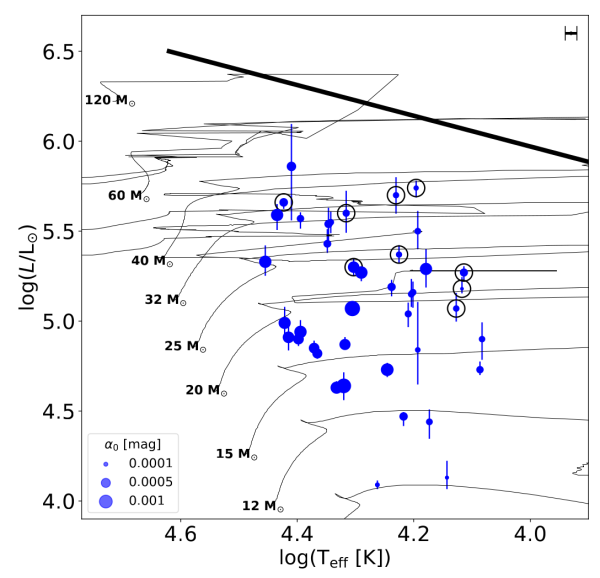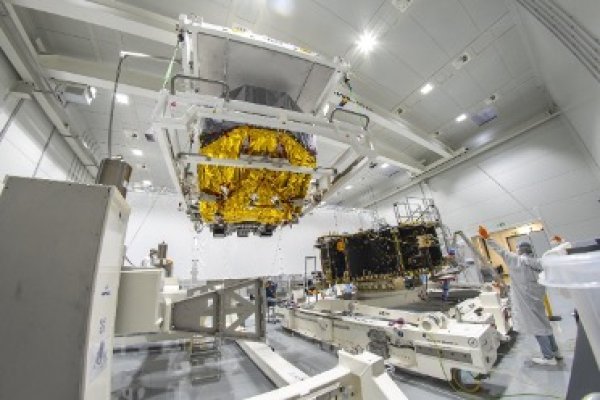Blue supergiants – stars many times larger and more massive than the Sun – undergo dramatic changes during their lifetime. A new study using the TESS satellite explores how these stars evolve and what information can be extracted from their variability. Through detailed analysis of forty-one of these stars, we are gaining new insights into their internal structure, rotation, pulsations and the mysterious low-frequency noise whose origin still eludes certain explanation.
Blue supergiants are some of the most massive and luminous stars in the Galaxy. In their evolution, they are between the main sequence, where stars burn hydrogen in their cores, and the later stages leading to core collapse and potentially supernova explosions. During this intermediate stage, they appear as very luminous objects. Yet their numbers in the observed samples do not match the predictions of traditional models of stellar evolution; in fact, we observe far more of them than we should. This so-called “blue giant problem” suggests that stars evolve more complexly over their lifetimes than we think. For example, they can return to a “blue” state after the red supergiant phase (so-called post-RSG stars), undergo interactions in binary systems, or become supergiants after merging with another star. The variability of their brightness – whether regular or stochastic – then serves as a diagnostic tool that reveals the physical processes taking place beneath the surface of these stars.
A team of astronomers led by Michalis Kourniotis of ASU’s Stellar Department focused on forty-one blue supergiants in the Milky Way whose physical parameters had previously been determined using spectroscopy. The main tool of the new study was the TESS satellite, which primarily searches for exoplanets but also provides extremely precise photometric data for hundreds of thousands of stars. The authors carefully analyzed the light curves (i.e., the evolution of the brightness changes over time) of individual stars, both using off-the-shelf data products and by processing their own cutouts from the satellite’s images.
more: web ASU (in Czech)
Image
Hertzsprung-Russell diagram showing the model evolution of very massive stars. The position of the forty-one blue giants studied is marked in the diagram, along with the evolutionary tracks of stellar models for stars with masses between 12 and 120 solar masses. The black circles in the sample highlight α Cygni-type stars.
More informations
- popular article: Na čem pracujeme: Proměnnost modrých veleobrů (M. Švanda, ASU)
- the paper: M. Kourniotis a kol., Variability of Galactic blue supergiants observed with TESS, Astronomy and Astrophysics 697 (2025) id.A152, preprint arXiv:2503.20860
- contact: Dr. Michalis Kourniotis, michail.kourniotis@asu.cas.cz



